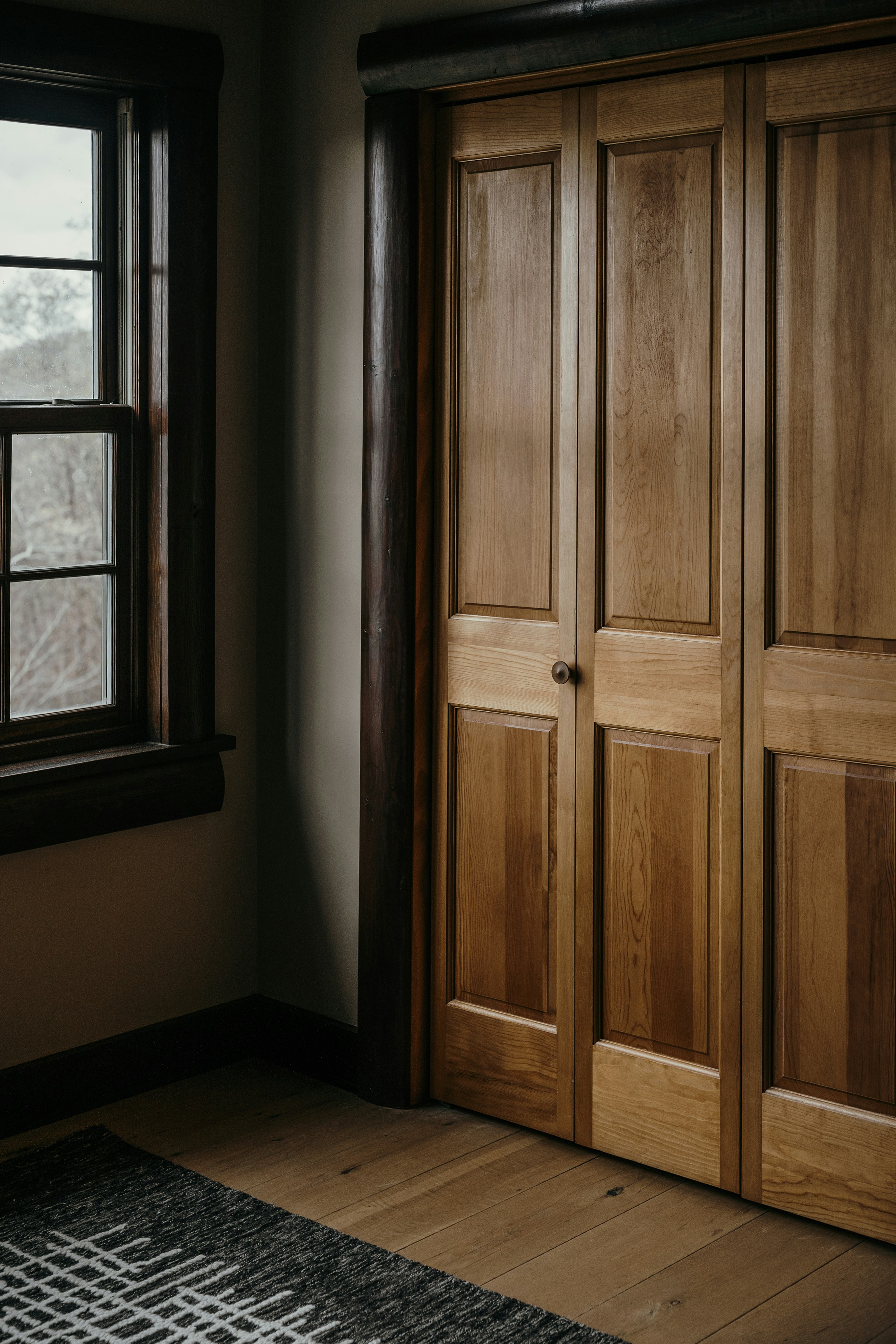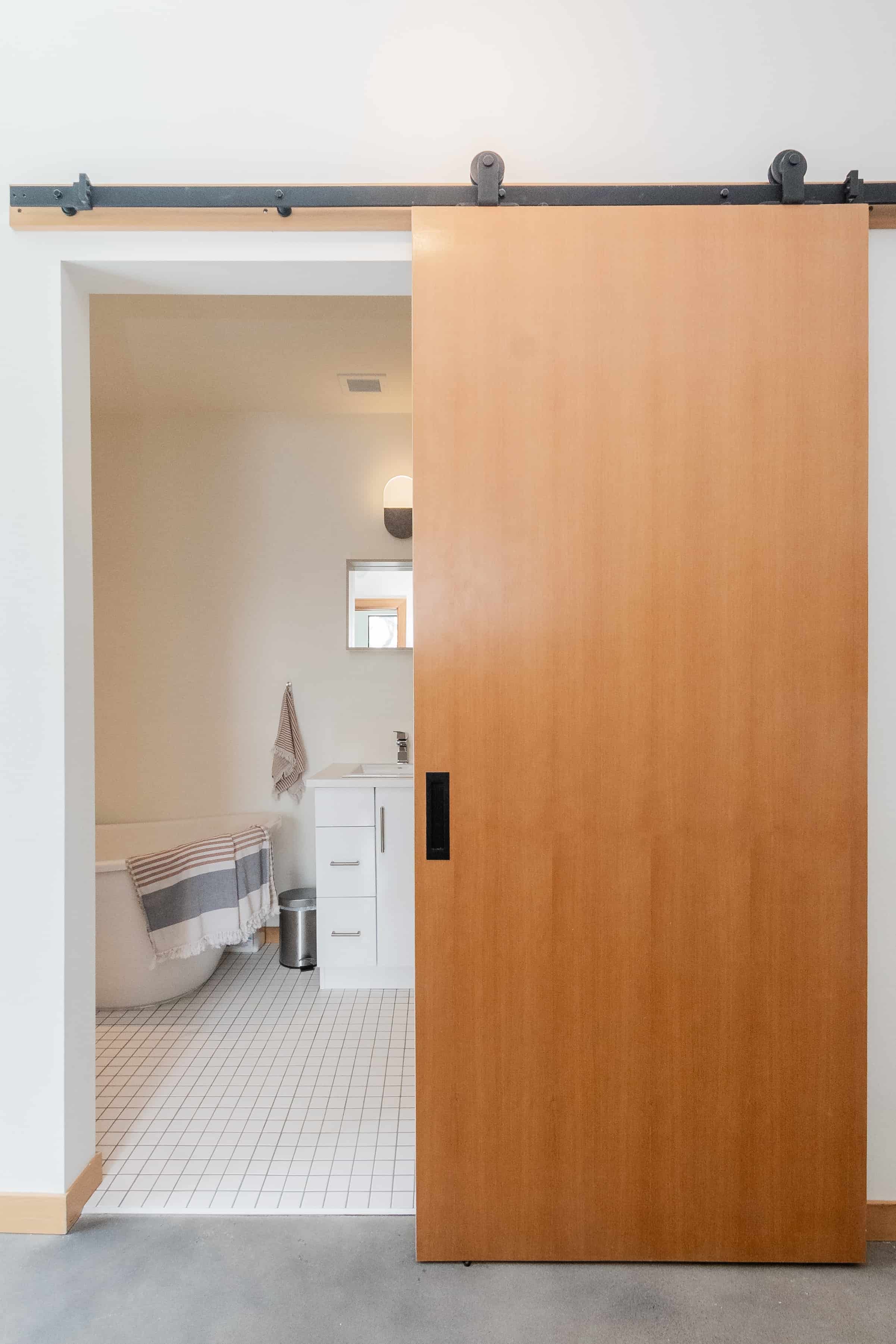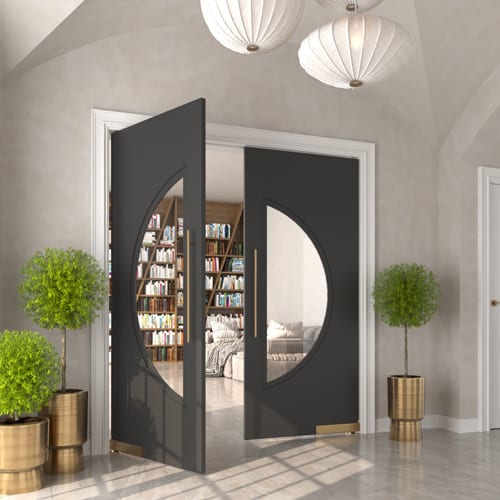
Sliding vs. Hinged Doors: Choosing for Home Interiors
Sliding vs. Hinged Doors: Choosing for Home Interiors
Doors serve as both practical barriers and aesthetic focal points within the home. When it comes to incorporating them into your interior design scheme, choosing between sliding and hinged doors is a decision that can dramatically affect the ambiance, functionality, and even the perceived space of a room. This comprehensive guide will walk you through the nuances of each door type, providing insight to help you make the right choice for your home.
Introduction to Sliding vs. Hinged Doors

The doors we choose are fundamental elements of interior design. Whether as grand entranceways, room dividers, or to conceal nooks and crannies, doors have the power to enhance both the look and feel of a space. Two of the most popular door types, sliding and hinged, offer distinctive advantages that cater to different design sensibilities and lifestyle needs. Understanding these differences can aid homeowners, interior design enthusiasts, and the DIY community in making informed decisions to transform their living spaces.
Importance of Doors in Interior Design and Functionality
Doors are crucial components that not only separate and unite living spaces but also play a significant role in soundproofing, privacy, and energy efficiency. The right door can seamlessly integrate with your design vision, opening up possibilities to create a cohesive and harmonious living environment.
Overview of Sliding and Hinged Doors as Popular Options
Sliding doors have gained popularity for their sleek, space-saving design, while hinged doors with their traditional aesthetic continue to be a staple in many homes. As we explore the features and practical applications of each, you will discover which type aligns with your home's unique requirements.
Understanding Sliding Doors

Sliding doors, also known as bypass doors or pocket doors, operate by sliding on a track system parallel to the wall they're mounted on. This design provides a sense of openness and helps save space by eliminating the need for door clearance.
Definition and Features of Sliding Doors
Sliding doors are characterized by their minimalist look, with large panels of glass or wood sliding past one another. They are a choice for those who prioritize modern design aesthetics and a love for unobstructed views.
Advantages of Sliding Doors
Space-Saving Design
Sliding doors are ideal for rooms with limited space. By not requiring additional space for a door to swing open, they can make any room feel more open and less crowded.
Modern and Sleek Aesthetics
The contemporary, uncluttered look of sliding doors enhances the airiness of spaces, making them the perfect choice for those who appreciate a modern or minimalist décor.
Versatility in Design Configurations
Sliding doors come in various designs, such as barn doors or stacked-panel configurations, allowing flexibility in adapting to different interior styles and room layouts.
Exploring Hinged Doors
Hinged doors, also known as swinging doors, are the traditional option recognized for their classic operation. These doors are attached to the door frame and swing open and shut along a vertical axis. The hinges could be pivot hinges, butt hinges or double action hinges either way the door can swing open and closed.
Definition and Features of Hinged Doors
Hinged doors offer a sense of permanence and solidity that many admire. They often feature classic designs and are available in a wide range of materials and finishes to suit any interior.
Advantages of Hinged Doors
Classic and Timeless Design
Hinged doors evoke a warm, welcome feel that is characteristic of traditional and classic homes. They offer an architectural element that can anchor the design of a space.
Full Access to Door Opening
The entire doorway is accessible with a hinged door, allowing for maximum passage width, which can be crucial in some areas, such as main entrances or doorways to outdoor living spaces.
Traditional Aesthetics for Various Interior Styles
Hinged doors provide a look of authenticity that complements a range of interior design styles, from farmhouse to Victorian to contemporary with a nod to classical elements.
Design Considerations for Sliding Doors
Installing sliding doors requires careful consideration of the space they will inhabit, as well as the desired look and function of the door.
Space Requirements and Clearance
When installing sliding doors, it's important to factor in the space needed for the door panels to slide. A sufficient wall space is required to open and close the door comfortably without obstruction.
Material and Finish Options
Sliding doors come in a variety of materials, including wood, glass, and aluminum, each with its aesthetic and maintenance considerations. The finish should be chosen to complement the room's décor and endure the expected wear and tear.
Hardware and Track Systems
The efficiency and longevity of sliding doors heavily depend on the quality of the hardware and track systems. High-quality materials and installation are imperative to ensure smooth operation over time.
Design Considerations for Hinged Doors
Selecting hinged doors demands an understanding of available space and the design intent for the room.
Swing Direction and Space Clearance
The swing direction of a hinged door determines the space needed for full operation. It's essential to have an adequate cleared path to prevent any interference with nearby furniture or walls. Sometime double swinging door can have more appeal.
Material and Finish Options
Similar to sliding doors, the material choice and finish of hinged doors will affect their aesthetic and durability. Wooden hinged doors offer a warm, classic appeal, while steel or fiberglass doors can provide a contemporary edge.
Hinge Types and Configuration Choices
Hinged doors offer a variety of hinge types, from traditional butt hinges to more modern pivot hinges. The choice of hinge will affect the door's function and the available design options in the space. Double action hinges allow doors to swing in both direction and automatically return the doors to center. These style hinges can be installed with full length doors.
Applications and Use Cases
Each door type has its ideal applications based on room size, style, and purpose.
Sliding Doors for Small Spaces and Modern Settings
Sliding doors are best suited for small spaces, such as closets and bathrooms, where square footage is precious for a door swing. They are also a favorite for modern and transitional room designs.
Hinged Doors for Traditional and Classic Interiors
Hinged doors excel in larger rooms where they can be used as elegant statements and focal points. They are perfect for areas like living rooms and dining rooms in traditional or classic homes.
Choosing the Right Option Based on Room Functionality
Consider the traffic flow and the functional requirements of the space. Hinged doors are more conventional for areas with high foot traffic, while sliding doors can provide more flexibility in flexible-use spaces.
Installation and Maintenance
Proper installation and periodic maintenance are key to ensuring the longevity and performance of your doors.
Installation Process for Sliding Doors
Installing sliding doors requires precise measurements, proper alignment, and secure fixture of track systems. Professional installation is recommended to avoid hassles down the line.
Installation Process for Hinged Doors
The installation of hinged doors involves ensuring plumb and square fitting of the door in the frame, as well as proper alignment and functioning of hinges and handles.
Maintenance Requirements for Both Door Types
Sliding doors require cleaning of the track system to prevent dust buildup that can cause issues with functionality. Hinged doors need periodic checks of hinges and handles and may require occasional lubrication.
Factors Influencing Decision Making
Consider various factors that will impact your choice between sliding and hinged doors, including space constraints, design styles, and usage patterns.
Space Constraints and Room Layout
Doors must fit within the available space without imposing on the functionality or aesthetics of the room.
Interior Design Style and Aesthetics
Your personal style and the design intent of the space will heavily influence the type of door that best complements the overall look.
Functionality and Usage Patterns
How the door will be used on a day-to-day basis is critical. Consider whether noise reduction, privacy, or ease of passage is most important for the room's regular activities.
Conclusion: Making the Right Choice Between Sliding and Hinged Doors
The choice between sliding and hinged doors is a significant decision in interior design and functional living. By considering the specific needs of your space, the character you wish to convey, and the practical aspects of operation and maintenance, you can make a well-informed decision that will elevate your home.

